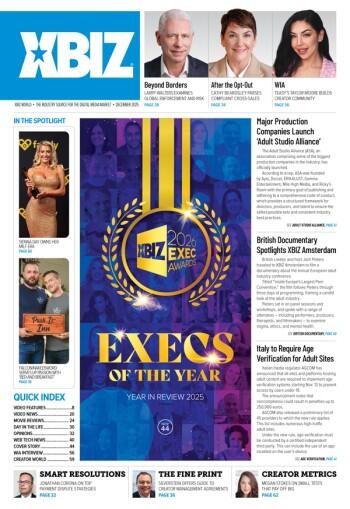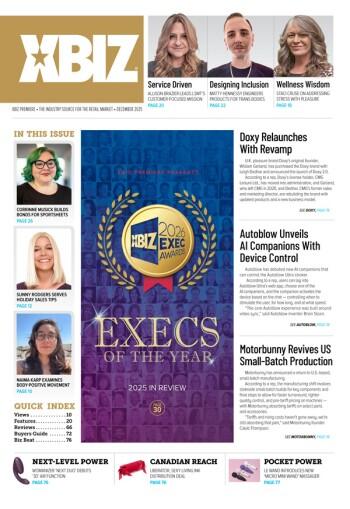With the new restrictions from Google kicking in, it is clear that user experience will be the key to success in 2018. Google rewards publisher sites that provide value to users. Delivering high quality content and compliant ad formats ensures a publisher’s site will remain in Google’s good books. This allows the publisher to receive high quality traffic, which every media buyer wants.
Advertisers should use Google-compliant ad formats and creatives, which are designed to enhance the user experience and not distract from viewing the content of a publisher’s site. Two formats that are totally compliant are native advertising and pre-roll in-stream video. Here, I give both publishers and advertisers tips on how to maximize the impact of these formats.
A video story can evoke emotion and create a memorable experience, which not only raises the profile of a brand/product but also drives clicks from consumers who want to know more and ultimately make a purchase.
Native Advertising
Native ads give a great user experience because publishers can ensure that their native ad zones look exactly like the editorial content of their site. The format has several customizable features including font type, size, color, bold and underline, background color, image border size, border color, etc. Native advertising works across all devices because the format is responsive. Publishers can choose between CPC and CPM to monetize this format.
From an advertiser’s perspective, users interact with native ads 20 percent to 60 percent more than they do with standard banner ads. The format allows for a title, short description and image, ensuring that the ad is viewed just like an article that would appear on the website being targeted. Once the user clicks on the ad, they will be taken to the offers landing page. Here are some tips to ensure maximum CTR:
• Make sure the title text and description fits in with the site’s editorial content and style.
• If targeting different countries, provide texts in the appropriate language.
• The image should be simple, with no animation, logos, branding, watermarks, CTA buttons or text. Match the image with the title and description.
• The CTR and performance can vary a great deal from one creative to another, so test many different images.
• For RON campaigns, use the CPC payment model so the CPM is automatically adjusted for every spot, including low CTR spots like footers.
• Create specific campaigns for premium sites and use the Smart CPM model to ensure the best quality impressions.
• Use an ad network that has deep targeting features to fine tune audience reach.
• The offer’s landing page should provide some form of content: text, images/videos and in the form of an article or tutorial.
• Tell a story first, use the page as a tool to educate the user about the product or service, provide customer testimonials and if it is a live cam product, try interviews with some of the models. After the story, put the call to action at the bottom of the landing page. By making the landing page more lifestyle oriented it will increase conversions because the user will be more engaged.
Pre-Roll In-Stream Video
Google believes that auto-playing video ads with sound go against the user experience, whereas pre-roll in-stream video ads are totally compliant. A user clicks on a video he wants to see on a publisher’s website and the pre-roll in-stream video ad is shown before he gets access to the video content he has selected, the same format used on YouTube. Typically, the video ad will be 15-30 seconds in length and features clickable CTAs within the ad. The format also includes a “skip ad” function, allowing users to skip the ad after a certain amount of time, usually 5-10 seconds.
Video ads generally use different payment models compared to display ads: CPC, where a user directly interacts with the ad by clicking on a CTA embedded link and Cost Per View (CPV). The CPV cost is not charged unless the viewer either watches the ad for a set amount of time (usually 10 seconds). In order for publishers to get maximum revenues for this format it is recommended that the “skip ad” function is set at 10 seconds.
Creatively, this ad format has huge potential for advertisers. Telling stories through video is a highly-effective way to build excitement, inform, entertain, educate and motivate the audience.
A video story can evoke emotion and create a memorable experience which not only raises the profile of a brand/product but also drives clicks from consumers who want to know more, and ultimately make a purchase. A study by CodeFuel and Nielsen found that 43 percent of users will watch an interesting video ad and 39 percent will click on a video ad that has an interesting offer. Here are some tips for producing a great converting video ad:
• Keep the message tight and offer entertainment value to users with as little disruption as possible.
• Publishers can add a “skip” button giving their viewers the option to skip the ad after the first 5-10 seconds. So it is imperative to convey the message quickly, incorporate strong calls to action early on in your video and create content that encourages viewers to watch the video ad in its entirety.
• Tell the story with and without sound, some users will have the video players volume icon set at 0 or muted.
• Invest in a good quality production.
• Ensure that the video ad is set at the correct screen resolutions as required by the ad network to ensure the ad shows well across all devices.
• Use an ad network that gives a good range of statistics for CPV, ExoClick offers real time statistics on video impressions, part views, more than 10 second views, completed views and views ratio.
• Use a network with deep targeting features especially if you want to reach specific niches and implement retargeting to track users.
• Ensure that pixel tracking is implemented in order to see where conversions are coming from, because users could see the ad, then type in the offer into a search engine rather than clicking on the ad.
In conclusion, don’t see Google’s new restrictions as a hindrance, see them as an opportunity by getting creative and testing out these two very effective and compliant ad formats.
Giles Hirst is head of communications at ExoClick.







